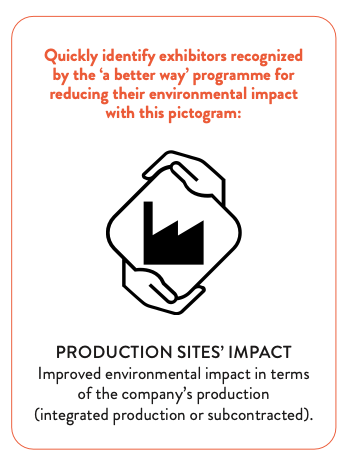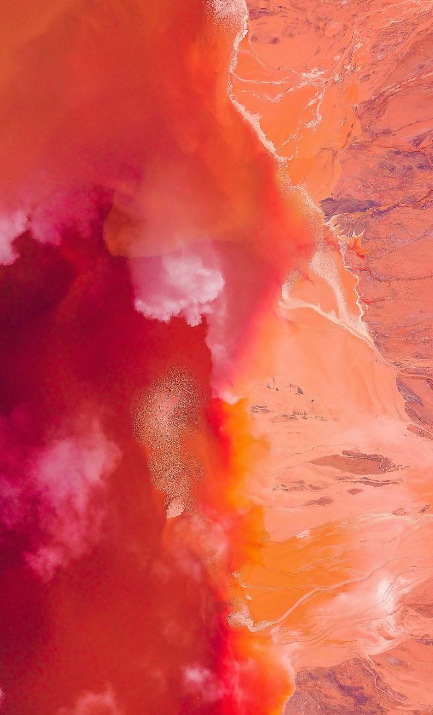The ‘a better way’ testimonials – the impact of production sites criteria The - Première Vision Paris
Proof by example! The ‘a better way’ testimonials highlight the pillars of the programme by sharing the initiatives of the Première Vision exhibitors, committed to a sustainable transition in their design and production models.
Key factor #1: Environmental management
While our gaze often turns to product compositions, the impact of production sites is just as essential in ensuring that environmental impacts are taken into account throughout the product life cycle.
Environmental management is therefore an essential foundation for the transformation of companies. Its aim is to establish a framework for analysing environmental impacts, identifying risks, prioritising solutions and drawing up an environmental action plan, accompanied by indicators to monitor and ensure the effectiveness of the system implemented. The aim is to achieve continuous improvement in environmental performance.
Many companies are now complying with ISO 14001 or EMAS standards, management systems and audits to certify their environmental responsibility initiatives.
Key factor #2: Energy
Exhibitors are committed to reducing their carbon footprint, whether using renewable or self-generated energy.
The energy transition to self-generated renewable electricity is one of Teseo‘s major areas of environmental performance. The current deployment of solar panels in the production units will enable us to operate with low-impact energy by 2024. Producing more energy than it consumes, this installation enables clean energy to be sold back to the networks, combining environmental and economic benefits.

Energy management is a key area of investment at Raynaud Jeune. By transforming its energy sources and processes, the tannery is able to optimise its environmental performance.
Since 2020, the fuel oil and gas used to heat the water or dry the hides has been replaced by a biofuel. The supply of steam has been eliminated, and the heating network has been completely overhauled. This biomass boiler, which uses wood chips from PEFC-certified wood crops, supplies 99.5% of energy from renewable sources, meaning that very little fossil fuel is consumed on site. The electricity consumed is fully offset by the same amount of green electricity from hydroelectric sources fed into the grid.
Read also: ‘a better way’ programme criteria #2: Impact of production sites
Key factor #3: Chemical substances
The ‘a better way’ programme encourages exhibitors to promote their OEKO-TEX standard 100 or RSL (Restricted Substances List) certifications that go beyond the regulatory requirements of the country of production. Zero Discharge of Hazardous Chemicals, ZDHC, is the new international standard for chemical substance management guidelines.
The guidelines go beyond traditional approaches to chemical restrictions, which apply only to finished products and focus on consumer safety. ZDHC helps protect workers, local communities and the environment from the possible effects of harmful chemicals.
Since 2019, Teseo has been committed to compliance with ZDHC’s restricted substance lists. By 2021, 88% of chemical substances were in line with the specifications, rising to almost 100% by 2023.
Another way of increasing checks is for British Millerain to use ChemTrec to analyse chemical substances. By recording the substances used each month, a report is issued to assess and identify risks and find substitute products where necessary.
Chemistry is a crucial issue in our industry, and beyond the dogmas of right and wrong that are frequently communicated, Raynaud Jeune reminds us of “the importance of tanning according to the right procedures, whatever the type of tanning”.
Key factor #4: Water
The treatment and reuse of water from production is a key issue, as this precious resource is necessary for the transformation stages.
Beppetex draws on wellfields for its production and dyeing processes, purifies the water and discharges it into the equally clean River Olona.
Relying on in-house treatment plants and drastic internal and external controls, the company points out that “more than a certification, we have a responsibility: our water is discharged into the River Olona, we can’t just do anything“.
Upstream, for more than 10 years, GOTS, OEKO-TEX and ZDHC criteria have been taken into account to minimise the risk substances entering process water.
Raynaud Jeune’s water discharge control procedures have also been recognised. Two in-house physico-chemical and biochemical purification plants are used to separate materials and treat pollution in process water, with optimum efficiency of up to 99%. To optimise management of water consumption, the tannery has already modified its process and invested in more efficient and economical water management systems. It is currently aiming to recycle some of the water.

Key factor #5: Waste management
Attentive to the entire life cycle, Raynaud jeune recycles 95% of its waste. Numerous outlets have been identified to process almost all of the by-products. Vegetable tanning sludge and fleshing waste are reused locally as fertiliser. As for the hide trimmings, they supply a factory in Germany which transforms them into synderm. This material, made from leather scraps and a latex or resin binder, is then used as a reinforcement or manufacturing part in the footwear and leather goods industries.
Raynaud Jeune’s efforts to improve its environmental performance have been rewarded with a Silver grade from LWG.


